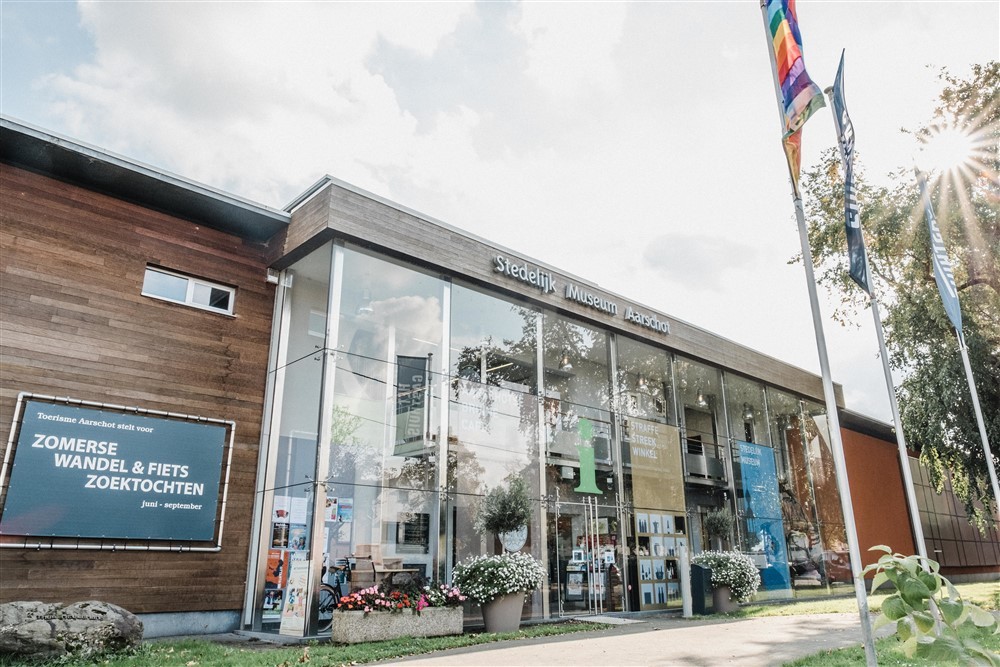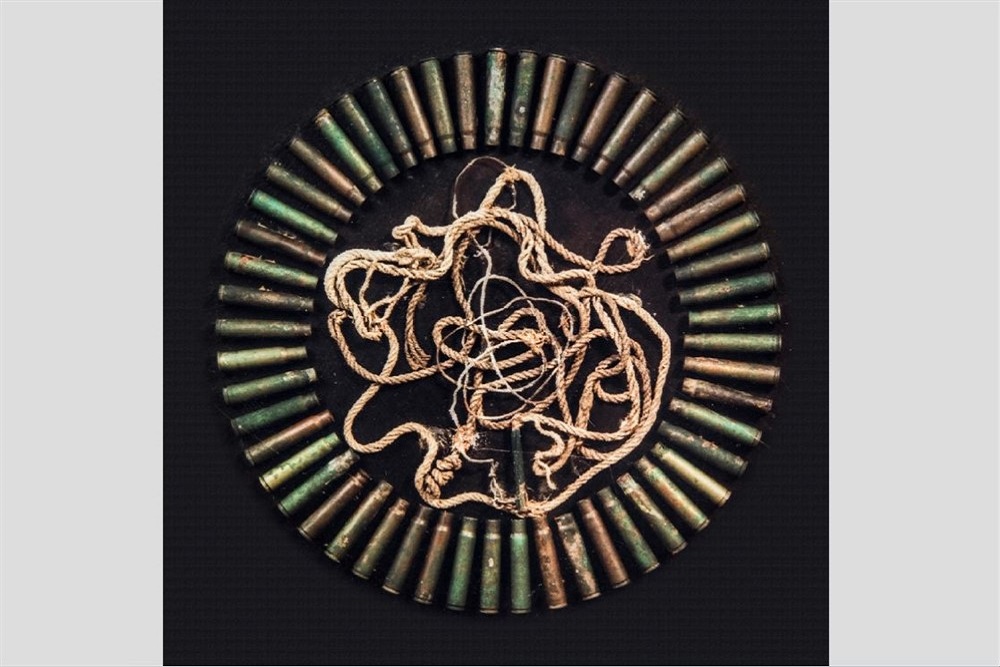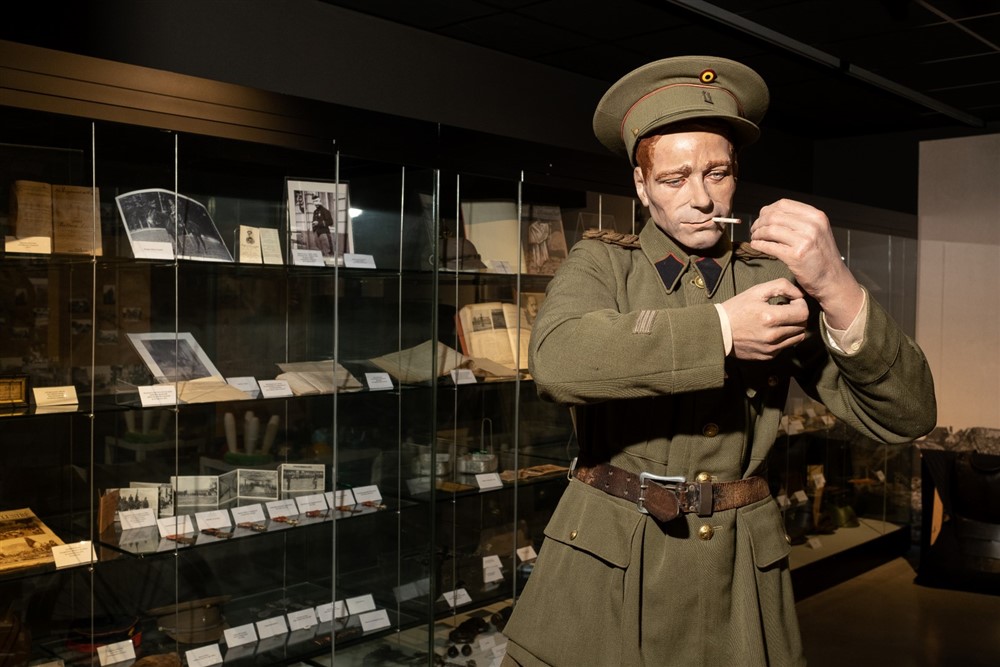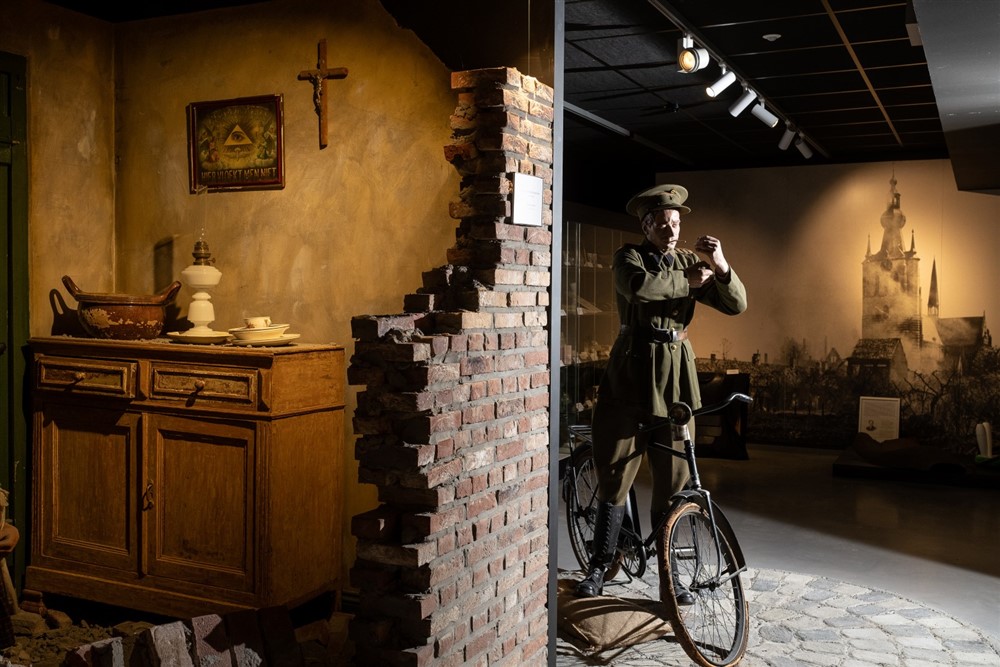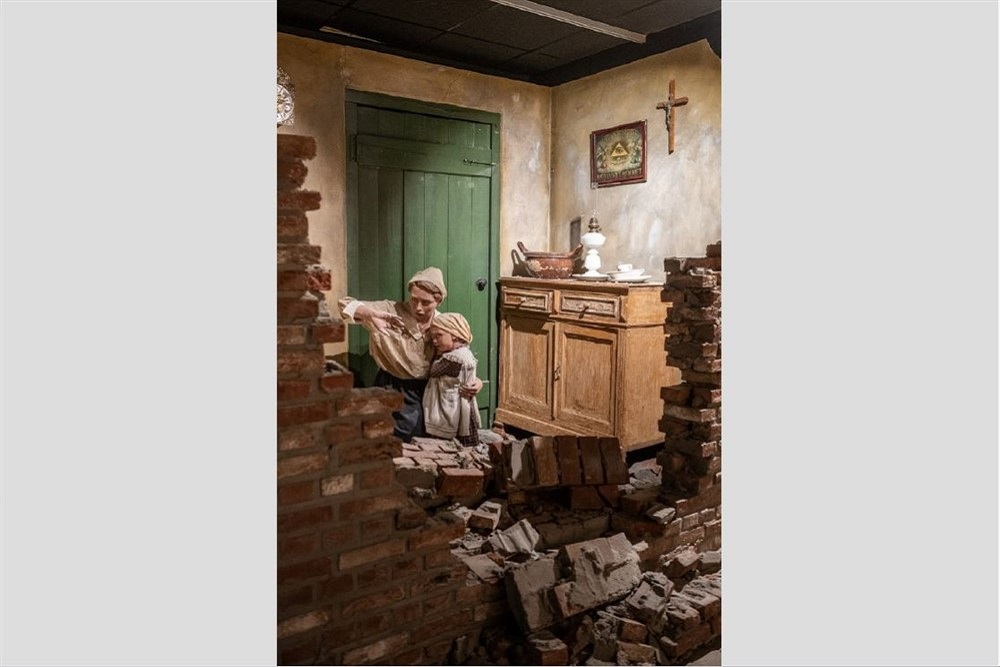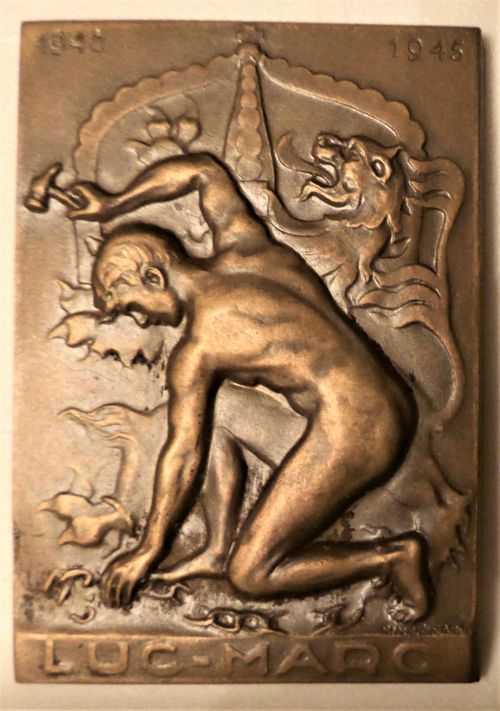Stedelijk Museum, Room "War and destruction" Aarschot
History
Last century, the Stedelijk Museum grew out of a local history collection. At the beginning of this century, the historic Gasthuis site of Aarschot was converted into the cultural pole of the city and in 2006 the museum found its destination in the renovated 'maternity'. The museum shows a broad spectrum of Aarschot's rich history, knowledge of heme, folklore and artists. A spacious place was allocated to the room "War and destruction". And this is no coincidence. Aarschot was hit hard in both world wars.
Aarschot has the dubious honor of being the first Flemish martyr city of the First World War. When the Germans occupy the city on the morning of August 19, 1914, their irritation is great. For hours the German troops had been stopped by strong Belgian resistance. Although there are no more Belgian troops in the city, the terror of the civilian population is particularly brutal. In the evening, panic breaks out in the German ranks and a wild firefight ensues, killing German commander Stenger. The slogan "Mann hat geschossen" was enough to blame the Aarschot civil servants. A revenge by the German soldiers drove the civilians out of their homes in the city center. Dozens of houses went up in flames. More than a hundred inhabitants of Aarschot were executed, including mayor Jozef Tielemans. Hundreds were imprisoned in the church for days. After the war, Aarschot was rebuilt and today shows a particularly homogeneous architectural whole.
During the Second World War, the city as an important railway junction suffered both German and Allied bombing. Even now, several neighborhoods were very affected. Some historical buildings disappeared from the cityscape forever. But Aarschot did not passively undergo the German occupation. Several resistance groups were active in the city and surroundings and it is the cradle of the resistance group "National Royal Movement". This Catholic and royalist movement had many followers in the Aarschot and Hageland regions.
Particularities
Although the room is striking at first impression because of its beautifully arranged war scenes and the wall-sized photos, many war attributes, documents and paraphernalia that are associated with Aarschot in both world wars are shown. Interesting is the collection of posters that the German occupying forces used to make numerous regulations known. The countless documents, photos and small possessions behind which personal suffering or courage are hidden are fascinating. The collection of medals and the framed personal 'memorial scenes' is beautiful. Of course you will find war material of all kinds: from bullets to a fragment of a crashed bomber, from helmets and hats to a bullet-pierced cuirass, from revolvers and rifles to a grenade launcher. Unique are the works of art of priest Jozef De Vroey, the man who kept the conscience of Aarschot awake.
Why visit?
The collection on display mainly shows the statue of the Aarschot citizen who is confronted with war violence and occupation. It is therefore a unique testimony in a broad historical context.
A visit to the museum is easily linked to a walk through the pleasant city, past the beautiful reconstruction houses and the countless war memorials that Aarschot has to offer.
Are you interested in more about the war past in the region? Aarschot is located on or near various cycling routes and war museums in the attractively attractive Hageland.
For more information and documentation, please contact the Tourist Office.
Location
Stedelijk Museum Aarschot
Elisabethlaan 103 - 3200 Aarschot
+32 (0) 16 56 84 51
museum@aarschot.be
www.hetgasthuis.be/museum
For current visiting hours, please visit the website of the museum.
Do you have more information about this location? Inform us!
Source
- Text: Jan Rymenams
- Photos: Berten Steenwegen
Related books
Nearby
Museum
- Allied Forces Museum Herselt - Herselt
- House of the Franco-Belgian Resistance - Tielt-Winge
- Museum44 - Meensel-Kiezegem
Point of interest
- Grote Markt Aarschot - Aarschot
- Glass Window Church Of Our Lady Aarschot - Aarschot
- Peace Carillon Aarschot - Aarschot
Monument
- OSB House Uytterhoeven Aarschot - Aarschot
- Sculpture Father Jozef Raskin Aarschot - Aarschot
- Memorial Stone Anna Persy Aarschot - Aarschot
Cemetery
- Belgian War Graves Aarschot - Aarschot
- Belgian Graves Veterans Aarschot - Aarschot
- Commonwealth War Graves Langdorp - Langdorp (Aarschot)
